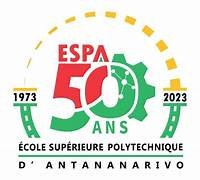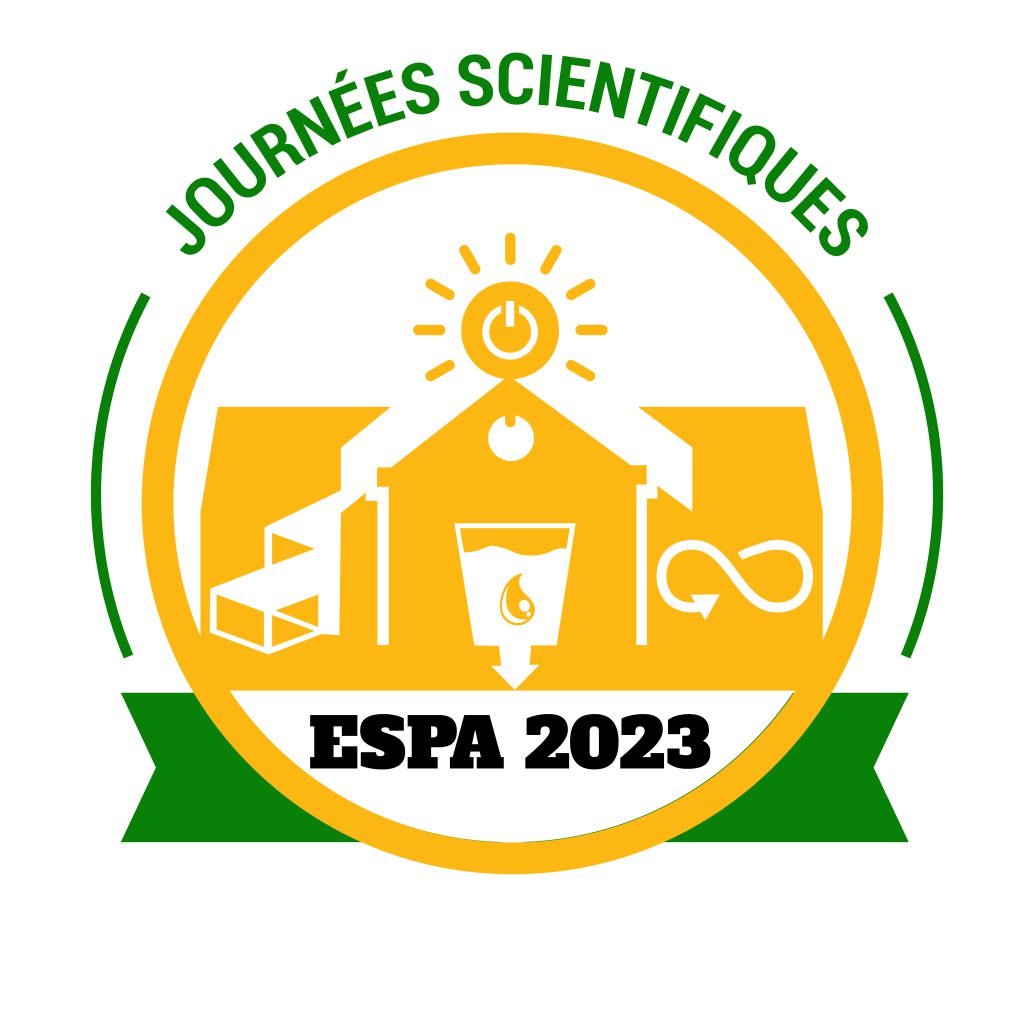Dye plants of Madagascar, color potential to replace artificial textile dyes
Résumé
The textile industry is one of the most polluting in the world, mainly due to wastewater discharges from dyeing with petrochemical dyes. In recent years, there has been a trend towards the use of natural fibers and dyes, and a move towards the bioeconomy. Madagascar is home to some one hundred dye plants that also deserve to be valorized in this field. The aim of this study is to assess the potential of a number of Madagascar plants for dyeing natural fibers such as wool and cotton, using different types of mordants. The study will focus on experiments carried out with four different species with potential sources of different colors, including Psiadia altissima, Eugenia jambos, Passiflora subpeltata and Aphloia theiformis. The extracts obtained by aqueous extraction were tested with five types of mordants: alum, FeSO4, CuSO4, tartaric acid and ash. Dye fastness was assessed by means of wash fastness tests. A color range of blue, green and yellow was obtained. Wash fastness varies according to plant and mordant. Good fastness was observed for cotton dyed directly with Eugenia jambos and wool mordanted with CuSO4. More studies on improving fastness are needed, but this new knowledge of Madagascar plants could be a starting point for their application in the textile industry.
dye plants, fastness, washing, natural dye, textile, Madagascar
References
1. Choudhury, R. A. K. In Roadmap to Sustainable Textiles and Clothing; Muthu, S.S., Ed.; Textile Science and Clothing Technology; Springer Singapore:Singapore, SG ;2014; pp.1–39.
2. Leube, R. H.; Rüttiger R.; W. In Ullmann’s Encyclopedia of Industrial Chemistry; Wiley‐VCH Verlag GmbH & Co. KGaA, Ed.; Wiley‐VCH Verlag GmbH & Co. KGaA: Weinheim, DE, 2016; pp. 1–54.
3. ADEME. (2021). La mode sens dessus dessous [E-text type]. https://multimedia.ademe.fr.
4. Sewekow, U. In Ullmann’s Encyclopedia of Industrial Chemistry ; Wiley‐VCH Verlag GmbH & Co. KGaA, Ed.; Wiley‐VCH Verlag GmbH & Co. KGaA: Weinheim, DE, 2016; pp. 1–11.
5. WWF. (2017). Changing Fashion : The clothing and textile industry at the brink of radical transformation [E-text type]. https://www.wwf.ch/sites/default/files/doc-2017-09/2017-09-WWF-Report-Changing_fashion_2017_EN.pdf.
6. MacArthur, E. (2017). A New Textiles Economy : Redesigning Fashion’s Future [E-text type]. https://ellenmacarthurfoundation.org/a‐new‐textiles‐economy.
7. Bevilacqua, M.; Ciarapica, F.E.; Mazzuto, G.; Paciarotti, C. (2014). Environmental Analysis of a Cotton Yarn Supply Chain. J. Clean. Prod [doi.org/10.1016/j.jclepro.2014.06.082], 82.
8. European Commission. (2012). Innovating for Sustainable Growth: A Bioeconomy for Europe [E-text type]. https://data.europa.eu/doi/10.2777/6462.
9. Federal Office for the Environment FOEN. (2020) Bio‐economy [E-text type]. https://www.bafu.admin.ch/bafu/de/home/themen/wald/fachinformationen/strategien‐und‐ massnahmen‐des‐bundes/aktionsplan‐holz/newsletter/newsletter‐20‐januar‐2020.html.
10. Domingo, M.J., Blanquera, J.M., Garcia, Y. New Sustainable Range of Dystaffs for Textile and Paper Dyeing, 2012, pp. 24-35 ; WO 2012/163498 A1.
11. UNEP. (2022). The environmental costs of fast fashion, Chemicals and Pollution action [E-text type]. https://www.unep.org/news-and-stories/story/environmental-costs-fast-fashion.
12. Andriamanantena, M.; Danthu, P.; Cardon, D.; Fawbush, F.R.; Raonizafinimanana, B.; Razafintsalama, V. E.; Rakotonandrasana, S. R.; Ethève, A.; Petit, T.; Caro, Y. (2019). Malagasy Dye Plant Species: A Promising Source of Novel Natural Colorants with Potential Applications – A Review. Chem. Biodivers [doi.org/10.1002/cbdv.201900442], 16.
13. Raharitsiadiana, H. M. Etude en vue de l’obtention de la teinture Indigo d’origine végétale pour la soie de Madagascar, Thèse de DEA, Chimie Organique, Faculté des Sciences, Université d’Antananarivo, 2008, pp 8-11.
14. Miandrimanana, F.; Farasoa, H. R.; Razafindrakoto J. M. (2022). Lawsoniainermis L. Lytrhraceae and Cassia obovata Collad. Fabaceae growing in Madagascar : Ethnopharmacological survey, phytochemical screening and coloring properties. International Journal of Research Publication and Reviews, 3 (3)
15. Andriamanantena M.; Danthu, P.; Razafimbelo, F.; Raonizafinimanana, B.;Petit, T.; Caro, Y. (2023). Natural sources of colorants from Madagascar biodiversity. Acta Hortic[doi.org/10.17660/ActaHortic.2023.1361.9], 13.
16. Etheve, A. M. in ‘Manuel de Teinture Naturelle : Exemple de Madagascar’, Cite : MG, 2005
17. Rossi T.; Mauricio, C. A.; José O. B.; Freeman, H. S. (2025). Wash fastness of textile fibers dyed with natural dye from Eucalyptus wood steaming waste, International Scholarly and Scientific Research and Innovation, 9 (7).
18. Bourgeois, T. & Randriamampianina, J. A. (2023). Indigofera tinctoria L. [E-text type]. https://portal.wiktrop.org, 2023.
19. POWO. (ND). Plantes du monde en ligne [E-text type] http://www.plantoftheworldonline.org/
20. Andriamanantena, M.; Valorisation de la biodiversité et études ethnobotanique, phyto-chimique et toxicologique des plantes tinctoriales de Madagascar : Applications dans le domaine des colorants naturels, Thèse de doctorat, Chimie-Biologie, Ecole Doctorale Sciences, Technologies et Santé, Université de la Réunion, 2020, pp. 164-171.
21. Bechtold, T.; Mahmud‐Ali, A.; Mussak, R. Natural dyes from food processing wastes. In Handbook of Waste Management and Co‐Product Recovery in Food Processing; Elsevier, 2007; pp. 502–533.
22. Patel B.; Kanade P. (2022). Iron-tannin complex effect on coloration and functional properties of silk fabric, Sustainable Chemistry and Pharmacy [doi.org/10.1016/j.scp.2021.100490], 22.
23. Beech, E.; Rivers, M.; Rabarimanarivo, M.; Ravololomanana, N.; Manjato, N.; Lantoarisoa, F.; Andriambololonera, S.; Ramandimbisoa, B.; Ralimanana, H.; Rakotoarisoa, S.; Razanajatovo , H., Razafiniary, V., Andriamanohera, A., Randrianasolo, V., Rakotonasolo, F., Rakotoarisoa, A.; Randriamamonjy, N.; Rajaovelona, L.; Rakotomalala, N.; Randriamboavonjy, T.; Rajaonah, M.; Rabehevitra, D.; Ramarosandratana, A.V.; Rakotoarinivo, M. B. H.; Ravaomanalina and Jeannoda, V. Red List of Trees of Madagascar. BGCI. Richmond, UK, 2021.
24. Panthong, K. & Voravuthikunchai, S. P. (2020). Eugejambones A-D from leaves of Eugenia jambos. Phytochemestry Letters [doi.org/10.1016/j.phytol.2020.05.011], 38.
25. MNHN & OFB. (2020). Inventaire national du patrimoine naturel (INPN) [E-text type]. https://inpn.mnhn.fr
26. Fern, A. (ND). Useful Tropical Database [E-text type]. https://tropical.theferns.info/
27. Kumar ; Chandrashekar, N.; Pandey K. K. Fuel properties and combustion characteristics of Lantana camara and Eupatorium spp. Ritesh Institute of Wood Science and Technology, 18th Cross, Malleswaram, Bangalore 560 003, India, 2009, pp
28. Willows R. D. In Chlorophylls: Plants Pigments and Their Manipulation ; Annua ; Plants Review ; CRC Press ; Blackwell Publishing; 2004; pp 23–56.
29. Rakotoarison, R. L. Activités antibactériennes de deux espèces de Psiadia, Thèse de DEA, Département de biochimie fondamentale et appliquée, Faculté des Sciences, Université d’Antananarivo, 2008, pp 27-34.
30. Razafindrabenja, L. E. Étude chimique et valorisation pharmacologique d’espèces du genre Psiadia endémiques de La Réunion et de Madagascar, Chimie analytique, Université de la Réunion, ffNNT : 2021LARE0027, 2021, pp 85-137.
31. Andrianoelisoa H. Madagascar et les huiles essentielles : prescription pour une gestion et production durable des espèces exploitées ; 1er atelier FOFIFA/DRFP, 2016.
32. Grauzdytè, D. Phytochemical composition and in vitro bioactivity of low investigated Phyllanthus phillyreifolius and Aphloia theiformis plant species indigenous to Reunion island, Natural Sciences, Chemistry (N 003), Thèse de doctorat, Kaunas University of Technology, 2020, pp 43-77.
33. Saravanan S.; Karuppusamy A.; Parimelazhagan T. (2014). Effets antioxydants, analgésiqus, anti-inflammatoires des polyphenols des feuilles de Passiflora subpeltata-Une espèce prometteuse de Passiflora, Cultures et produits industriels [doi.org/10.1016/j.indcrop.2014.01.03], 54.
34. Samanta, A. K. & Agarwal, P. (2009). Application of natural dyes on textiles, Indian Journal of Fibre & Textile Research, 34.
35. Shahid, M.; Shahid-ul-Islam; Mohammad F. (2013). Recent advancements in natural dye applications: A review. Journal of Cleaner Production [doi: 10.1016/j.jclepro.2013.03.031].


